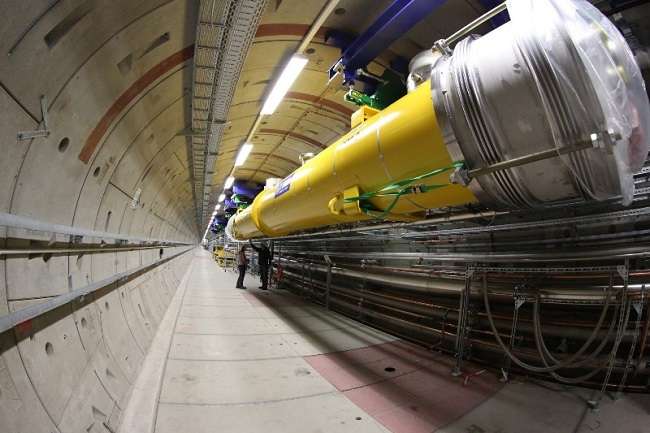Physicists to enhance accuracy of the world's most powerful synchrotron

According to researcher Alexander Potylitsyn, head of the Department of Applied Physics at TPU, X-ray and laser radiation are commonly used in modern medicine, but separately from each other. X-rays allow doctors to superficially scan the patient's body. However, it is impossible to see inside a specific biological object, for example, blood vessels near the heart. The problem of medical X-ray sources is related to their scattering processes inside structures; therefore, only a small amount of energy reaches the targeted area of the body, significantly reducing diagnostic capabilities. By contrast, laser light comprises a focused energy flow that is not dissipated. But lasers can't penetrate structures thicker than 30 cm, and because this radiation is high temperature, there is a danger of damage to human body tissues.
"The idea of the European X-ray Free Laser is to combine the advantages of X-ray and laser radiation. The intensity and direction of X-rays will be focused, like laser. Thus, the flow will not be scattered, and X-ray diagnostic capabilities will increase by several times," the scientist explains. "The X-ray free laser would scan on the molecular level and reveal how drugs affect cells in our bodies."
This technology will be useful in materials science, as well—for example, in studying properties of nanomaterials.
It is assumed that the European X-ray Free Laser will be the most powerful of the existing facilities of synchrotron radiation.
It can produce an X-ray monochromatic beam with energy up to 25 keV and an intensity greater than 10 orders of the intensity of synchrotron radiation on the most powerful source of such radiation—the SPring-8 Storage Ring in Japan.
"To get a powerful X-ray source, it is necessary to accelerate electrons to energy of 17.5 GeV in a superconducting accelerator and run them through a special magnetic system—an undulator. The length of these superconducting accelerator modules is 3.4 km. They are now housed in a specially designed tunnel," says Alexander Potylitsyn.
In order to provide X-ray beam with required parameters, you need to control the characteristics of the accelerated electron beam with high accuracy.
For this purpose, physicists from Tomsk Polytechnic University proposed a new method for the diagnosis of such beams, and the leadership of a DESY's instrumental department adopted this proposal for an experimental verification. During joint experiments from 2011 to 2015, it was shown that the proposed method can be used to diagnose XFEL beams. In 2017, the researchers are scheduled to create a diagnostic station for continuous monitoring the parameters of accelerated electron beams.
Provided by Tomsk Polytechnic University


















